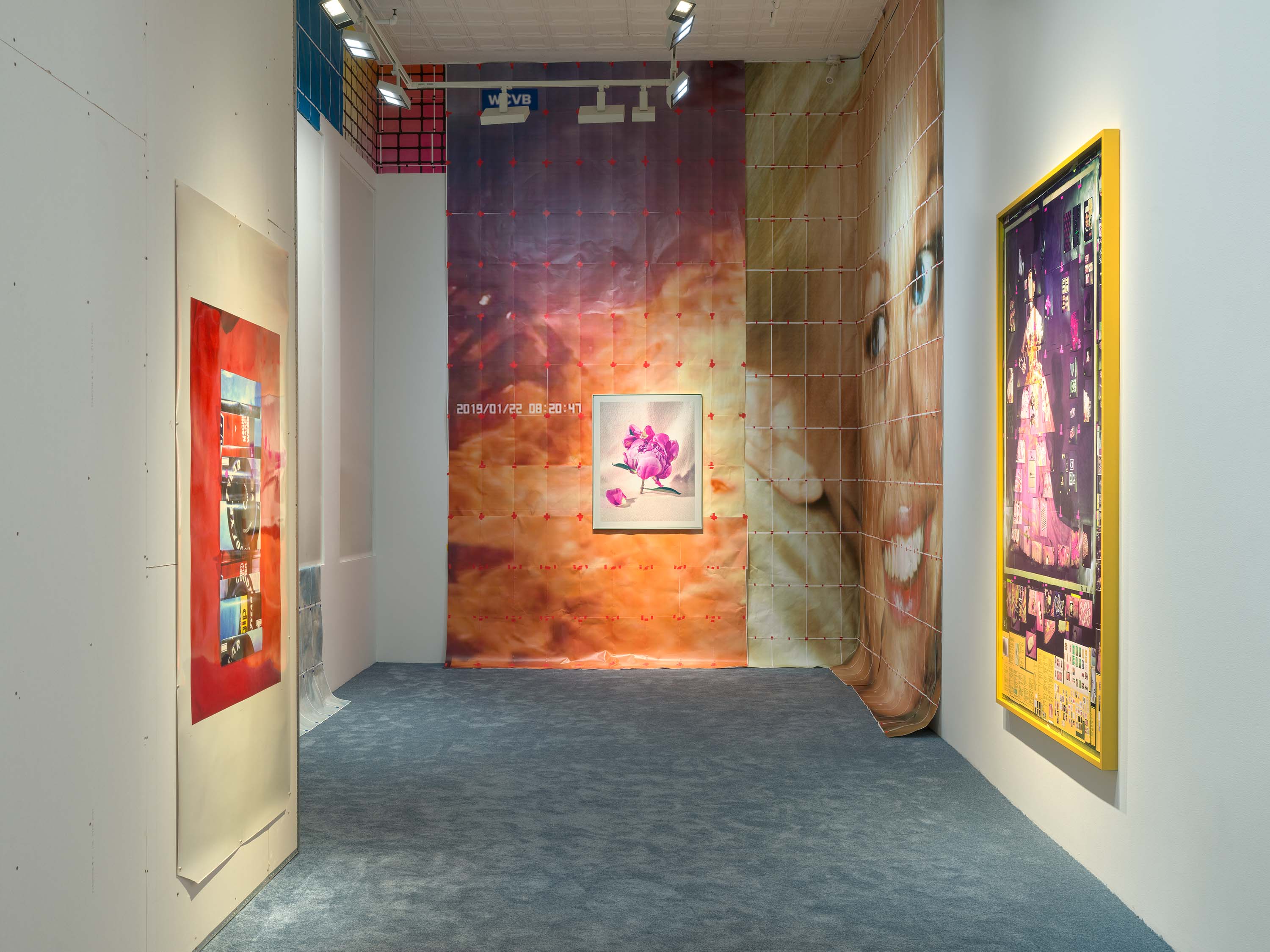2024
Solo Exhibition at 52 Walker














In her new film, Cwynar combines newly produced video and photographs with found images amassed in her archive. The principal scenes for Baby Blue Benzo were filmed at a studio in Los Angeles, where Cwynar staged a surrealistic shoot—featuring two sets of circular camera tracks—with massive props and elaborate historical costumes that became a kind of stand-in for the artifice and arbitrariness of composing images. The artwork’s central visual pillar is a replica of the titular 1955 Mercedes-Benz 300 SLR, which is to date the most expensive car to be sold at auction. Throughout the film, the Benz along with the colors baby blue and Ferrari red are leitmotifs that surface again and again—the car, for one, variously appears as a custom-built replica, as a cutout, in photographed reproductions, and as a life-sized copy at the Mercedes-Benz Museum in Stuttgart, Germany. Inserting her authorial presence, Cwynar incorporates filmed representations of herself in the Benz, of hired models and crew, and of friends and collaborators like Tracy Ma, a graphic designer she has depicted in previous projects. This amalgamation of images, all shown at varying scales, is unveiled in a continuous horizontal scroll across an extra-wide screen, a new animation style that Cwynar developed with a video editor. The movement structurally suggests the forward progress of certain techno-utopian ideals, though the occasional shift backward hints of its false promises as well. This scroll is interrupted by visible “seams” such as pieces of tape or cinematic glitches, which question the sovereignty of the images presented.
Cwynar uses the make of this luxury vehicle and the color baby blue as starting points for both the film and the exhibition, and she further links the eponymous Benz to benzodiazepines—medications commonly prescribed for conditions such as anxiety and insomnia, a sleep disorder with which the artist herself struggles. Connecting her intense states of wakefulness to the uninterrupted 24/7 thrum of twenty-first-century life, Cwynar conceptually pairs the advent of photography to the development of the Fordist assembly line, which altered how modern subjects were viewed and how they viewed their own productivity. In Baby Blue Benzo, the artist relates these ideas to our shared contemporary reality: the omnipresence of social media and the push toward automation and artificial intelligence. Cwynar collected, over a period of two years, relevant video clips and imagery from archival sources and stock databases, and pieced them together along with AI-generated text and visuals.
Cwynar includes recently shot footage of the Manhattan Bridge and the New York City skyline, the continuous construction near her studio, an auto workers’ strike in Detroit, “superblooms” in Los Angeles that have resulted from ever-warming temperatures, dolls, and sequences of ice skaters, which recall the artist’s own teenage experience taking part in a sport that puts young women on constant display. She also cites the violent histories of car manufacturing, scenes of car chases pulled from the internet, “booth babes,” and other such pin-up models as Pamela Anderson, whose bodies drum up scopophilic desires to consume and be consumed. The authoritative voice of Paul Cooper, an actor with whom Cwynar has worked on previous projects, provides the main narration for the film; it is paired with the artist’s own voice, which emphasizes or corrects points that Cooper has made. These scripts are layered and interspersed with jarring moments from car commercials or sound bites of an engine revving, as well as excerpts from classical and popular music tracks that register different emotional cues. In this deeply researched and personal project, Cwynar presents her insomnia as a kind of dispossessed dream state—one in which the artist, audience, the beauty and potency of images, and the past, present, and future of photography are all implicated.